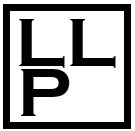Thinking about Accessibility in Library Land
Last week, we met with Sandy Ho, a disabled queer Asian-American woman, community-organizer, and a researcher in disability policy. We try to pay attention to accessibility issues around Library Land; but in many ways, we come from a place of able-bodied privilege. Sandy, who is a wheelchair-user, helped us think about the issue of access more broadly.
She made the point that the Americans with Disabilities Act (ADA) should be seen as the floor for discussions, not as the ceiling, when it comes to providing equal access. We talked a lot about what makes a space accessible and welcoming for everyone. Some of the things she mentioned have been totally lost on us - things like really heavy furniture that is hard (if not impossible) to move, step stools being left between shelves, etc.
Meeting on access with Sandy Ho in Weston.
These things don’t only affect people with disabilities though, and that brought us to a discussion of human-centered design in general. The more human-friendly a space is, the more effective it is for any patron regardless of their disability-status. One example of this is the way that many libraries have shelves for Large-Print books or offer patrons ebooks, and access to books in a variety of languages. By providing materials in different formats, libraries provide access to a range of members in the community.
We also talked about some of the non-physical aspects of equal access and enhancing the library experience for all patrons. Again, these included a lot of things we just hadn’t thought about. For example, does a library’s “Library of Things” collection include assistive technologies? It’s a great question, but one that we - as able-bodied people - have never thought to ask.
The conversation ended on a really wonderful note. Sandy, along with her friends and colleagues Alice Wong and Mia Mingus, have joined forces to create “Access is Love.” This project is all about promoting the importance of creating a welcoming and accessible spaces for all.

